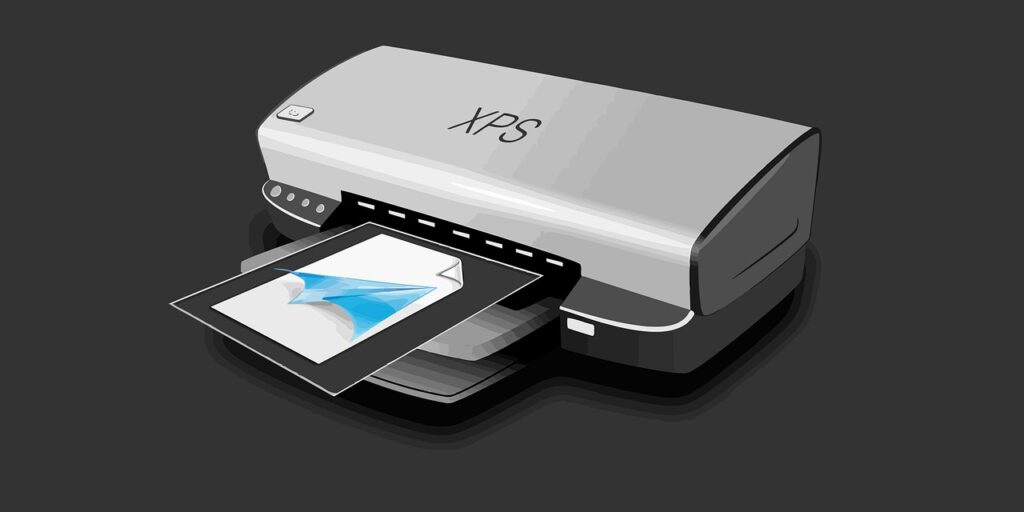Show Image Setting up your wireless printer doesn’t have to be complicated with this comprehensive guide.
Introduction
Wireless printers have revolutionized how we print at home and in offices, eliminating the need for messy cables and allowing you to print from virtually anywhere within your network. However, the wireless printer setup process can sometimes feel overwhelming, especially if you’re not tech-savvy. The good news is that connecting your printer to Wi-Fi is much simpler than it seems. This comprehensive guide will walk you through the entire process of how to connect printer to Wi-Fi networks step by step, providing you with troubleshooting tips and expert advice for a seamless setup experience. Whether you’ve just purchased a new wireless printer or you’re reconfiguring an existing one, this guide will help you get your printer online and working flawlessly in no time.
What Is Wireless Printing?
Wireless printing technology allows you to send documents and photos from your computer, smartphone, or tablet to your printer without physically connecting the devices with cables. Instead, the printer connects to your home or office Wi-Fi network, making it accessible to all authorized devices on the same network.
The primary advantage of wireless printer setup is convenience – you can place your printer anywhere within your Wi-Fi range, not just next to your computer. This flexibility makes wireless printers ideal for homes and offices where multiple people need to print from different devices and locations.
Modern wireless printers support various connectivity protocols, including:
- Wi-Fi Direct: Allows devices to connect directly to the printer without going through a router
- AirPrint: Apple’s technology for printing from iOS devices without installing additional software
- Cloud Printing: Enables printing via the internet from anywhere in the world
Understanding these fundamentals will help you make the most of your wireless printer’s capabilities once you’ve successfully connected it to your Wi-Fi network.

7 Simple Steps to Connect Your Wireless Printer to Wi-Fi
Setting up your wireless printer doesn’t have to be complicated. Follow these seven straightforward steps to connect printer to Wi-Fi networks quickly and efficiently:
Step 1: Gather Necessary Information
Before you begin the wireless printer setup process, collect the following essential information:
- Your Wi-Fi network name (SSID)
- Your Wi-Fi password
- Your router’s security type (WPA, WPA2, etc.)
- The printer’s model number (for downloading correct drivers if needed)
Having this information readily available will streamline the setup process and help avoid frustrating pauses during configuration.
Step 2: Position and Power On Your Printer
Place your printer within good range of your Wi-Fi router to ensure a stable connection. While modern printers can connect from considerable distances, signal strength matters for reliable printing.
- Unbox your printer (if new) and remove all packing materials, tape, and protective covers
- Place the printer in a well-ventilated area near a power outlet
- Connect the power cable and turn on the printer
- Allow the printer to complete its initialization process
Step 3: Navigate to Wireless Setup on Printer Control Panel
Most modern wireless printers have a built-in setup wizard that guides you through the wireless printer setup process:
- On the printer’s control panel, look for “Settings,” “Network,” or a Wi-Fi icon
- Select “Wireless Setup,” “Wi-Fi Setup Wizard,” or similar option
- If your printer has a touchscreen, this process is usually straightforward, following onscreen prompts
- For printers with limited displays, you may need to use directional buttons to navigate the menu system
Each printer manufacturer has a slightly different interface, so consult your printer’s manual if you have trouble locating the wireless setup option.

Step 4: Select Your Network and Enter Password
Once you’ve accessed the wireless setup menu:
- Your printer will scan for available networks and display them on screen
- Select your Wi-Fi network name (SSID) from the list
- Enter your Wi-Fi password when prompted (take care to input it exactly, including uppercase/lowercase letters and special characters)
- Some printers may ask you to confirm the security type (WPA, WPA2, etc.)
- Confirm your settings and allow the printer to connect
This connection process may take several minutes as your printer obtains an IP address from your router and establishes a stable connection.
Step 5: Install Printer Software on Your Computer
To fully utilize your printer’s features, you’ll need to install the appropriate software:
- Insert the installation CD if provided with your printer, or
- Visit the manufacturer’s website to download the latest drivers for your specific model
- Run the installation program and follow the on-screen instructions
- When prompted for connection type, select “Wireless” or “Network”
- The software should automatically detect your printer on the network
- Complete the installation and run a test print to confirm proper setup
Most modern computers will automatically detect network printers, but installing the manufacturer’s software ensures you have access to all features and the latest updates.
Step 6: Connect Additional Devices
Once your printer is connected to Wi-Fi and your primary computer is set up, you can add the printer to other devices:
For Windows computers:
- Go to Settings > Devices > Printers & scanners
- Click “Add a printer or scanner”
- Select your printer from the list of available devices
- Follow any additional prompts to complete installation
For Mac computers:
- Go to System Preferences > Printers & Scanners
- Click the “+” button to add a printer
- Select your printer from the list
- Click “Add” to complete the process
For smartphones and tablets:
- Download the printer manufacturer’s app from your device’s app store
- Open the app and follow the setup instructions to connect to your printer
- Alternatively, use built-in printing options in your device’s share menu
Step 7: Verify and Test Your Connection
The final step in your wireless printer setup process is to verify that everything works correctly:
- Print a test page from your computer (usually available in printer settings)
- Try printing from different devices to ensure network-wide accessibility
- Check that all printer functions (scanning, copying, etc.) work as expected
- If applicable, test advanced features like duplex printing or photo printing
If the test print is successful, congratulations! Your printer is now successfully connected to Wi-Fi and ready for use.

Essential Wireless Printing Tools and Features
Modern wireless printers offer several tools and features that enhance your printing experience:
Mobile Printing Apps
Most printer manufacturers provide dedicated apps that make it easy to print from mobile devices. These apps often include:
- Document scanning capabilities
- Cloud storage integration
- Print quality adjustment options
- Ink/toner level monitoring
Popular examples include HP Smart, Canon PRINT, Epson iPrint, and Brother iPrint&Scan.
Cloud Printing Services
Cloud printing services allow you to send print jobs to your printer from anywhere with internet access:
- Google Cloud Print (compatible with many printer brands)
- Apple AirPrint (for iOS and macOS devices)
- Manufacturer-specific cloud services like HP ePrint
These services are particularly useful for remote work situations or when you need to print something before arriving home.
Auto-Connection Features
Many modern printers include auto-reconnection capabilities that help maintain your wireless connection:
- Automatic troubleshooting of connection issues
- Self-healing network connectivity
- Connection status notifications
These features ensure that temporary network disruptions don’t require manual intervention to resume printing.
Troubleshooting Common Wireless Printer Connection Problems
Even with careful setup, you might encounter issues with your wireless printer connection. Here are solutions to the most common problems:
Printer Cannot Find Network
If your printer fails to detect your Wi-Fi network:
- Check distance and interference – Move the printer closer to your router and away from electronic devices that might cause interference
- Verify router settings – Ensure your router’s 2.4GHz band is enabled (many printers don’t support 5GHz)
- Check network visibility – Confirm your network is not hidden; temporarily make it visible for setup if necessary
- Restart devices – Power cycle both your router and printer to clear temporary issues
Connection Failures During Setup
If your printer finds your network but fails to connect:
- Double-check password – Verify you’re entering the correct Wi-Fi password with proper capitalization
- Check security compatibility – Some older printers may not support newer security protocols like WPA3
- Temporary disable security – As a diagnostic step only, temporarily disable router security to test connection
- Update printer firmware – Check manufacturer’s website for firmware updates that might resolve compatibility issues
Printer Disconnects Frequently
For printers that connect initially but lose connection regularly:
- Signal strength issues – Consider a Wi-Fi range extender if the printer is far from the router
- IP address conflicts – Assign a static IP address to your printer through your router settings
- Power saving mode – Disable or adjust power saving features that might turn off wireless functionality
- Router channel congestion – Change your router’s channel to avoid interference from neighboring networks
Computer Cannot Find Wireless Printer
If your computer doesn’t detect your printer:
- Network mismatch – Ensure both devices are on the same network (especially if you have separate 2.4GHz and 5GHz networks)
- Firewall issues – Check if your computer’s firewall is blocking printer communication
- Outdated drivers – Update or reinstall printer drivers from the manufacturer’s website
- Network discovery settings – Enable network discovery in your computer’s settings
Addressing these common issues will resolve the vast majority of wireless printing problems and ensure a stable connection for reliable printing.
Frequently Asked Questions
Why won’t my printer connect to Wi-Fi even with the correct password?
This is often due to compatibility issues between your router’s security settings and your printer. Try updating your printer’s firmware, checking if your printer supports your router’s security protocol (WPA2, WPA3, etc.), or temporarily adjusting your router’s security settings for testing. Signal interference from other devices can also cause connection problems.
Do I need to reconnect my printer every time my Wi-Fi network changes?
Yes, if you change your network name (SSID), password, or router, you’ll need to update your printer’s wireless settings. However, for minor network disruptions or router restarts, most modern printers will reconnect automatically once your network is back online.
Can I connect my printer to multiple Wi-Fi networks?
Most printers can only connect to one network at a time. However, some advanced models with dual-band capability can remember multiple network profiles and connect to the strongest available signal. Check your printer’s manual to see if it supports this feature.
Why is my wireless printing so slow?
Slow wireless printing can result from poor Wi-Fi signal strength, network congestion, or outdated printer firmware. Try moving your printer closer to your router, updating the firmware, or connecting fewer devices to your network when printing large jobs. Additionally, check if your printer driver settings are configured for high-quality printing, which takes longer to process.
Conclusion
Successfully connecting your wireless printer to Wi-Fi opens up a world of convenient printing possibilities. By following the seven steps outlined in this guide, you can complete your wireless printer setup with minimal frustration and enjoy the benefits of printing from anywhere in your home or office. Remember that proper positioning of your printer, up-to-date firmware, and understanding your specific model’s requirements are key factors in achieving a stable connection.
If you encounter difficulties during setup, the troubleshooting tips provided should help resolve most common issues. For persistent problems, don’t hesitate to consult your printer’s manual or contact the manufacturer’s customer support for model-specific assistance.
Wireless printing technology continues to evolve, with manufacturers regularly introducing new features to simplify connectivity and enhance functionality. By keeping your printer’s firmware and software updated, you’ll ensure the best possible wireless printing experience for years to come.
How to Reconnect a Printer That’s Keeps Disconnecting Read More.
5 Essential Steps to Effortlessly Install Printer Driver on Windows Read More.





Recent Comments